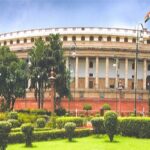Keeping up with the torrent of news over the last year has been overwhelming for all. But it’s an especially difficult challenge for local newspapers, which writes nearly every news story it publishes. Their reporters, backup staff and columnists worked virtually seven days a week since the start of the COVID-19 outbreak, including through a battle with the virus. For all the hustles, they still wish to have time to write more about the people whose lives have been disrupted by COVID-19. While there’s more news to fill the pages of the Newspapers, the publications have had to shrink to survive as cash-strapped businesses have pulled ads, forcing the papers to shed pages and cut staff positions and hours. They feel more cost-saving measures will be necessary, but it will be hard to figure out what to do next. They are so lean that they don’t have anywhere to cut.
Local news outlets were in rough shape even before the pandemic. Many newspapers have closed down in the first 15 years of their establishment.Today, many more newspapers have stopped circulation as the local sources of “credible and comprehensive” information have withered. COVID-19 has only hastened local outlets’ demise, costing communities what could otherwise be valuable sources of local information about viral spread, vaccinations and more. Among the local vernacular newspapers, all have increased their price and reduced their circulation. Ad revenue dropped 62% during a quarter of 2020 compared to the year before, and circulation revenue dropped 38%. Many have endured layoffs, furloughs and other cutbacks, according to an assessment.
As local and small newspapers disappeared, they leave behind an information vacuum that makes way for the spread of misinformation on social media platforms, which appear to be organic local news but instead feature mostly algorithmically-generated articles repurposed from other outlets and public data sets. The consequences of the country’s local news drought have become especially apparent during the pandemic. Over the last year, political polarization and misinformation has caused some people to doubt even basic facts of the pandemic, from the accuracy of death rates to whether measures like face masks can slow the virus’ spread. In some communities, where many residents have pushed back on scientifically-proven measures like mask-wearing, local reporters have been one of the only bulwarks for the truth. It has been hard at work dispelling rumors about the virus—including falsehoods about improper hospital use of COVID-19 funds—and taken on critics of social distancing and state mask mandates.
The constant writing about the happenings around with two key goals in mind: keeping their readers and the communities safe, and helping them recover from the pandemic’s economic devastation. If they fail, there will be no local news coverage. There’s nothing that replaces local and small newspapers. In small towns of India, the newspaper is the only source of authentic information, despite the proliferation of electronic media.
The pandemic has also threatened some publications that were on sound footing at the beginning of 2020, where the newsroom shrunk after advertisers pulled away or closed. In the COVID-19 era, the consequences of the small newspapers crisis are most obvious; when looking at the resources available, where small newsrooms have survived.
There, readers could find out about school, college and festival closures, see where to pick up donated food, and read stories from the local community, like one about a woman who died of COVID-19 after resisting masking and social distancing guidance. Without the digital edition of the print media, those tools and coverage may have never existed. It was felt strongly about doing, giving people this information, because the readers wouldn’t get it otherwise.
We, at Pratsrut Plus, have faced challenges brought on by the pandemic, too. At the paper’s worst moment, one of our employees was quarantined with COVID-19. At one point, only he and another staff member were on the editorial team. Keeping up with pandemic news, combined with the regular news cycle, was just overwhelming with the help of our own website, facebook and WhatApp platforms. We kept the paper going by working from home. We never wanted to leave it as we feared that the public wouldn’t otherwise get the information they needed. Our annual subscribers and readers were waiting for the fortnightly to be reaching them with news analysis and critical observations by our columnists.
There’s no other fortnight newspaper in English, published from Bhubaneswar with such regularity. It’s just us, and it’s up to us and to be here and to cover all of the events that take place; not just the big things that would catch the attention of the mainstream media. So we feel that responsibility to people.
Today on June 16, 2021, we are entering to the 17th year of our ethical news reporting. The experience, which we gained during last sixteen years, has encouraged us to stick to our ethics. The love we received from our avid readers was so encouraging that the financial burden of reduced advertisement tariff and even without advertisement, failed to discontinue any single issue so far. However, we are not sure as to how long we can continue so, if the pandemic situation continues beyond certain limits.
On this occasion of 17th Anniversary, we extend our sincere thanks to our readers, columnists, reporters, news agencies, advertisers, sponsors and the staff members for their continued support, love and blessings. We shall fight COVD-19 together and win.








































